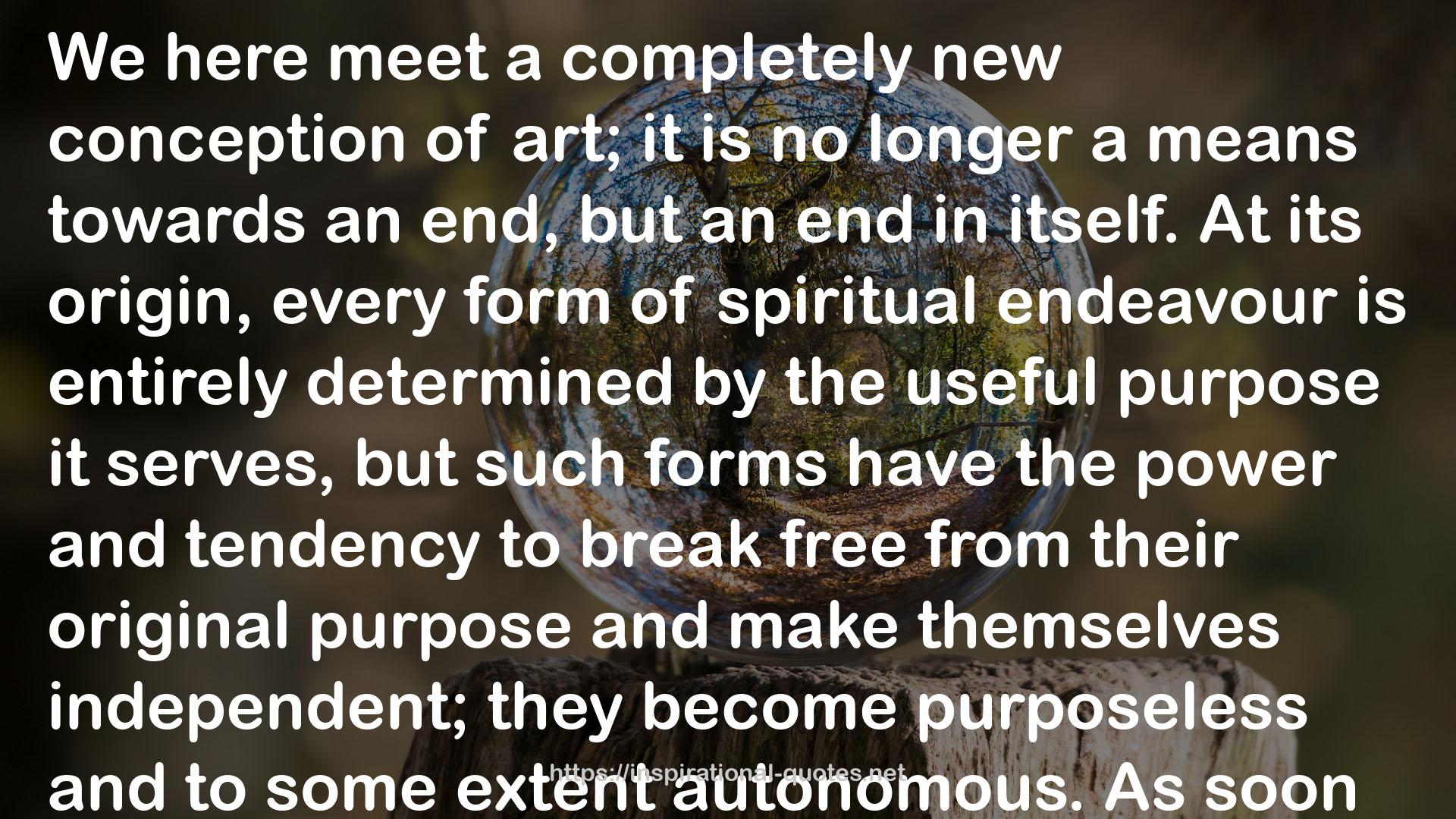" We here meet a completely new conception of art; it is no longer a means towards an end, but an end in itself. At its origin, every form of spiritual endeavour is entirely determined by the useful purpose it serves, but such forms have the power and tendency to break free from their original purpose and make themselves independent; they become purposeless and to some extent autonomous. As soon as man feels secure and free from the immediate pressure of the struggle for life, he begins to play with the spiritual resources which he had originally developed as weapons and tools to aid him in his necessity. He begins enquiring into causes, seeking for explanations, researching into connections which have little or nothing to do with his struggle for life. Practical knowledge gives place to free enquiry, means for the mastery of nature become methods for discovering abstract truth. And thus art, originally a mere handmaid of magic and ritual, an instrument of propaganda and panegyric, a means to influence gods, spirits and men, becomes a pure, autonomous, ‘disinterested’ activity to some extent, practised for its own sake and for the beauty it reveals. In the same way, the commands and prohibitions, the duties and taboos, which were originally just expedients to make a common life in society possible, give rise to a doctrine of ethics that sets out to realize and perfect the moral personality. The Greeks were the first people to complete this transition from the instrumental to the ‘autonomous’ form of activity, whether in science, art or morality. Before them there was no free enquiry, no theoretical research, no rational knowledge and no art as we understand art—as an activity whose creations may always be considered and enjoyed as pure forms. This abandonment of the old view that art is only valuable and intelligible as a weapon in the struggle for life, in favour of a new attitude which treats it as mere play of line and colour, mere rhythm and harmony, mere imitation or interpretation of reality—this is the most tremendous change that has ever occurred in the whole history of art. "
― Arnold Hauser , The Social History of Art, Volume 1: From Prehistoric Times to the Middle Ages
